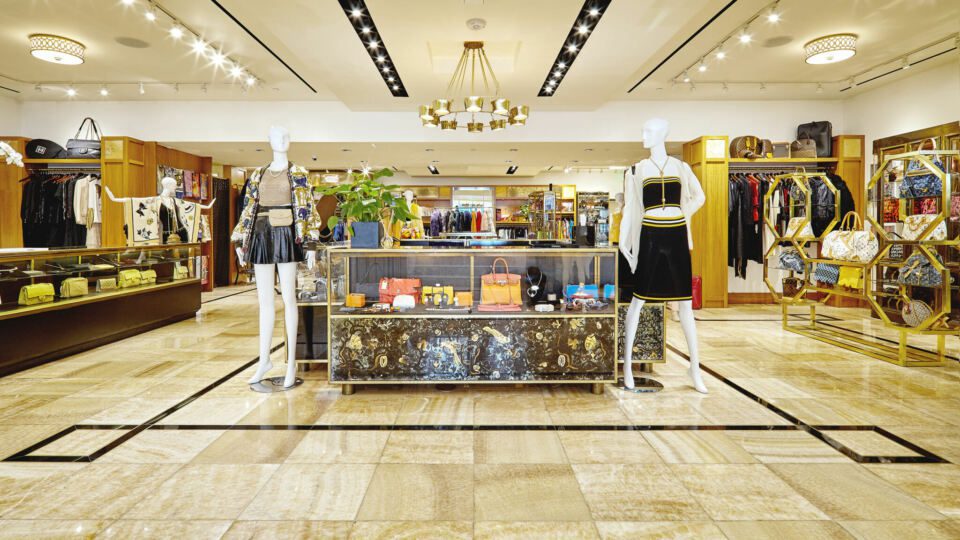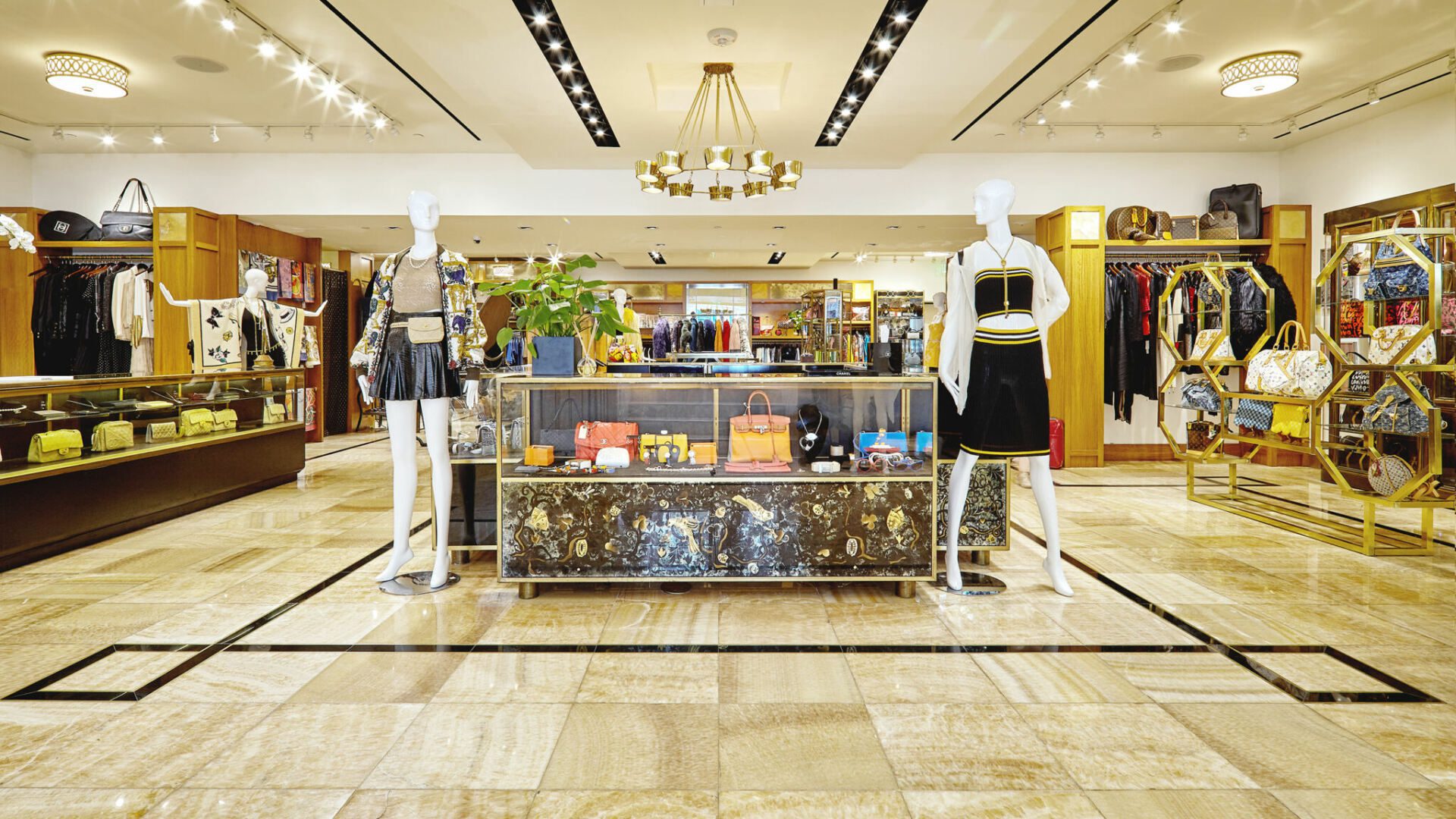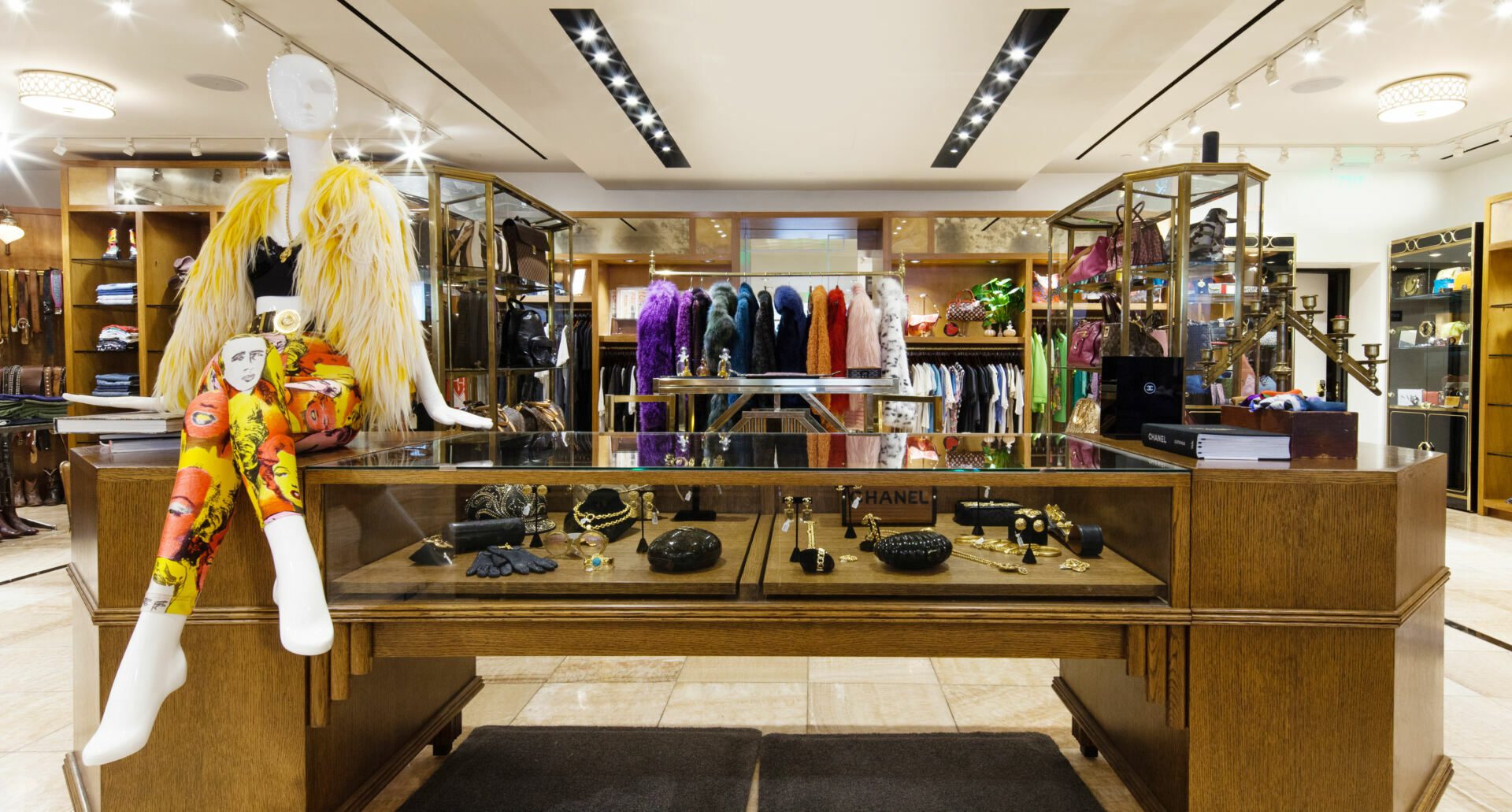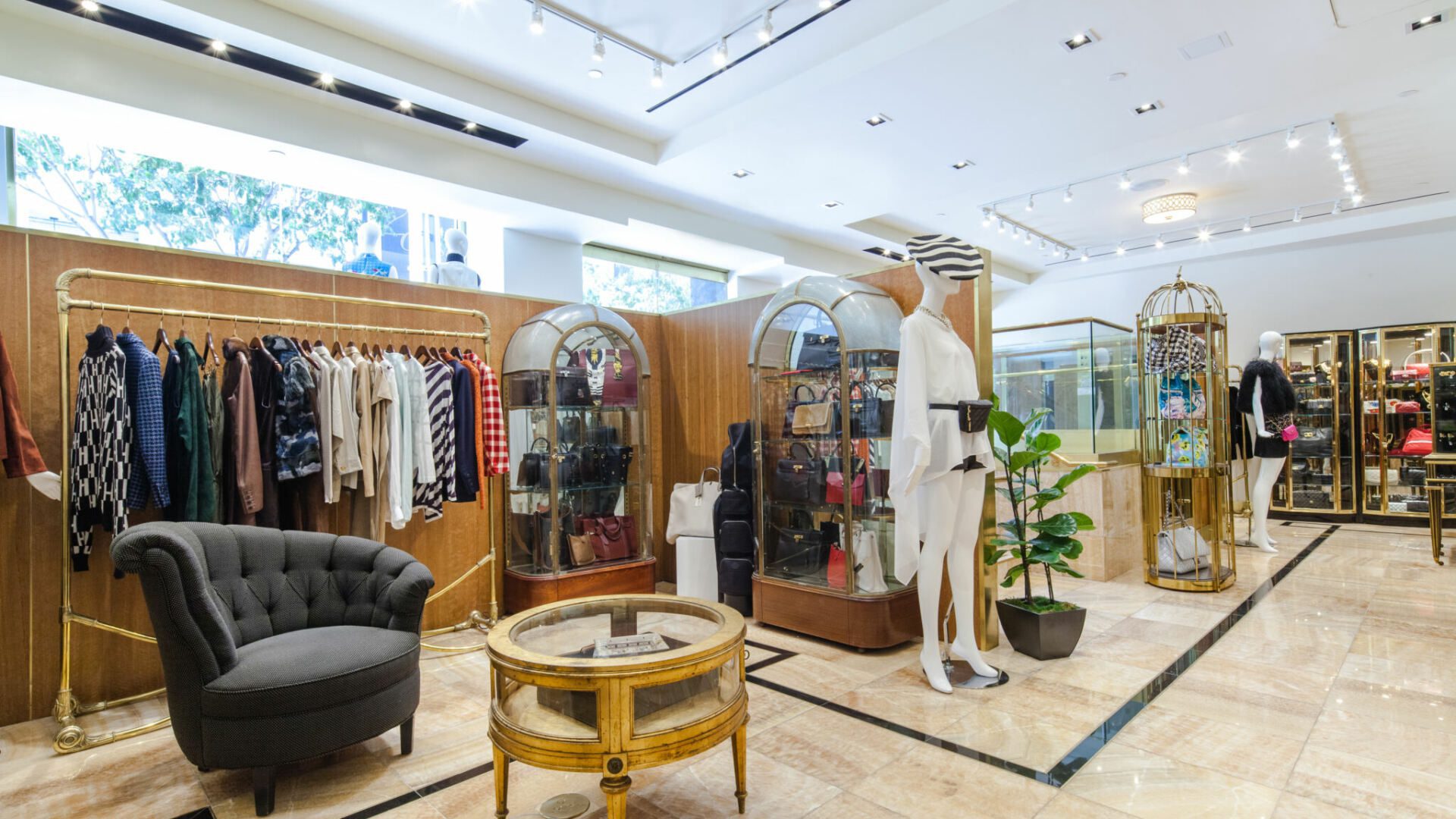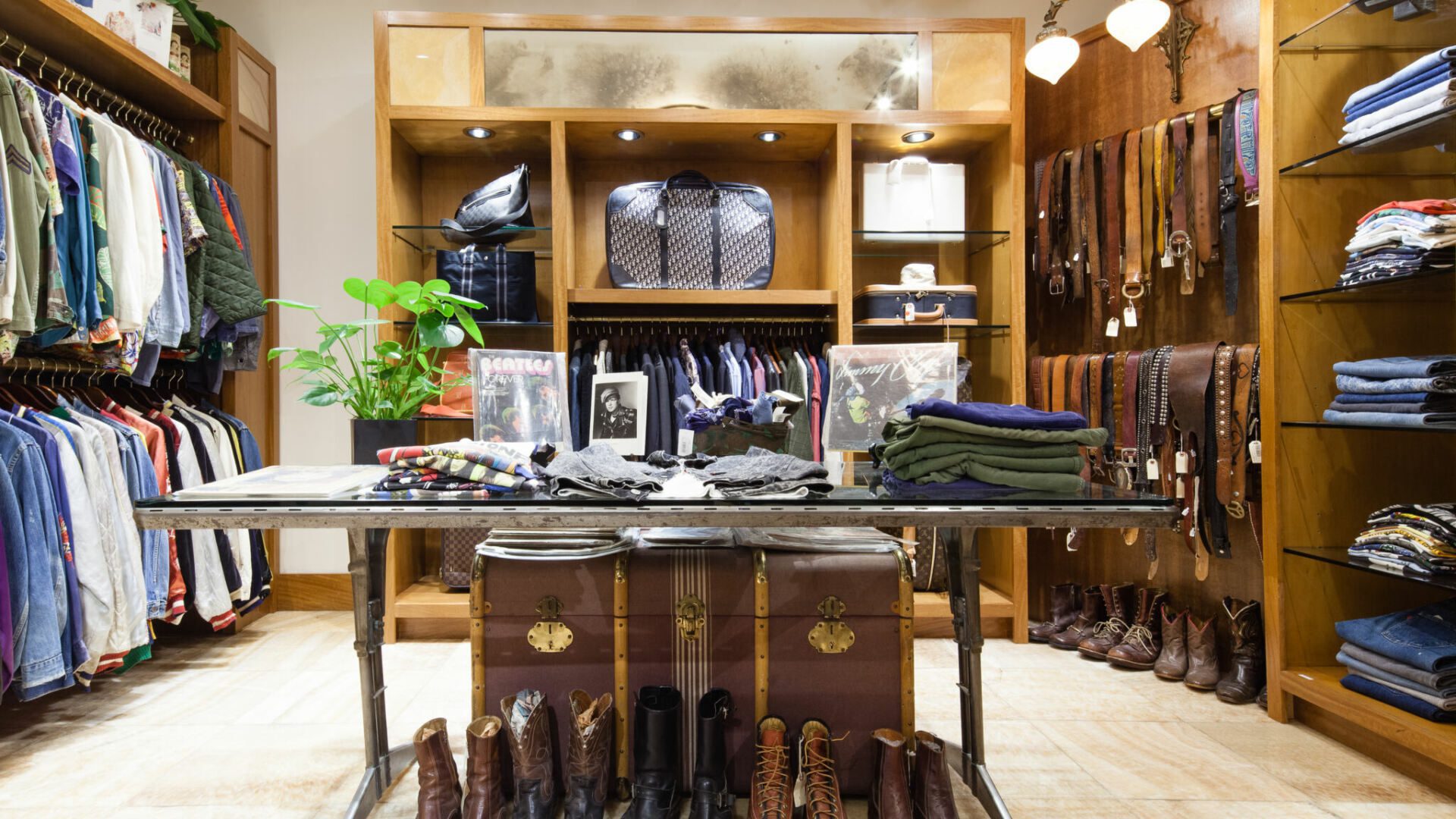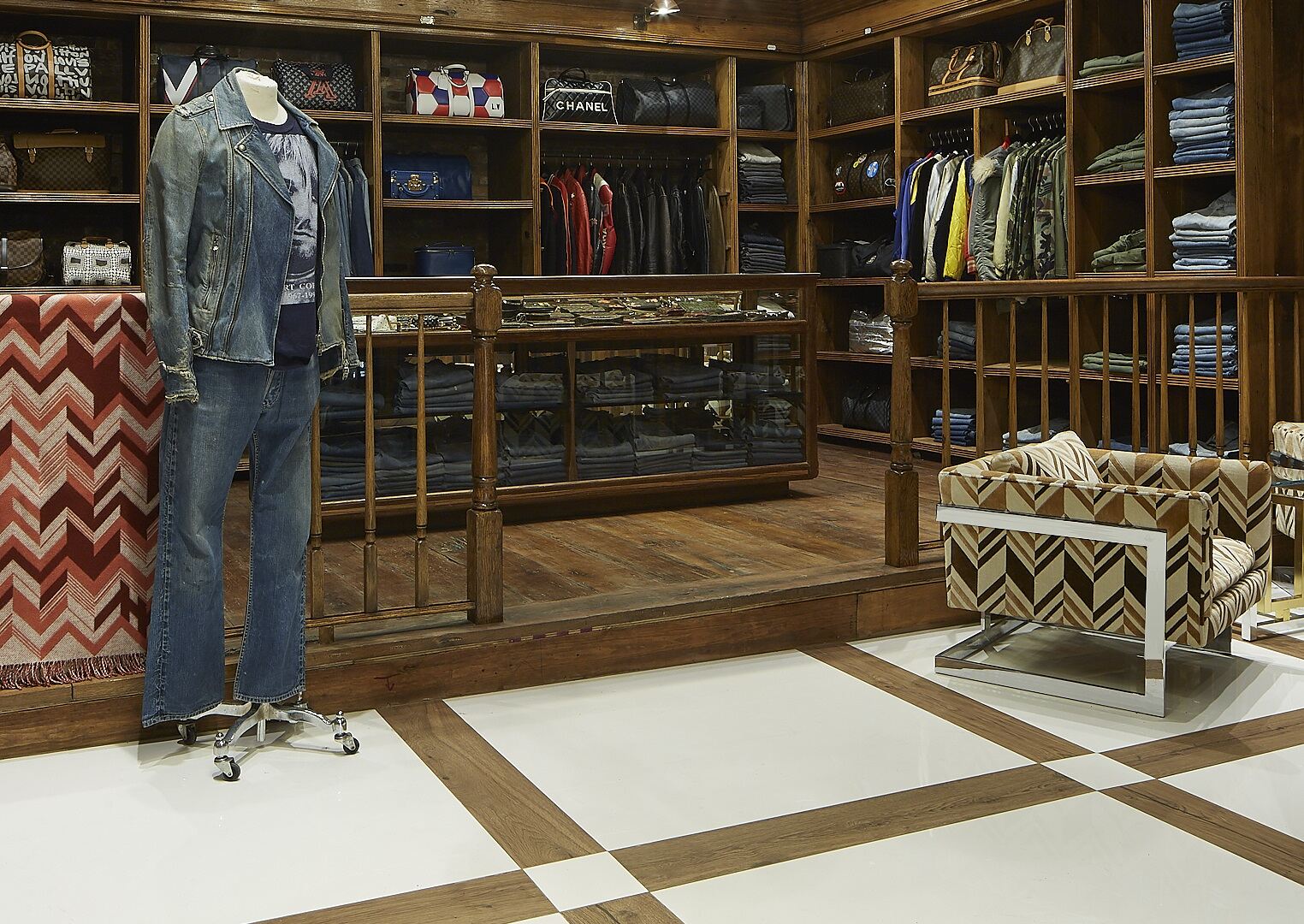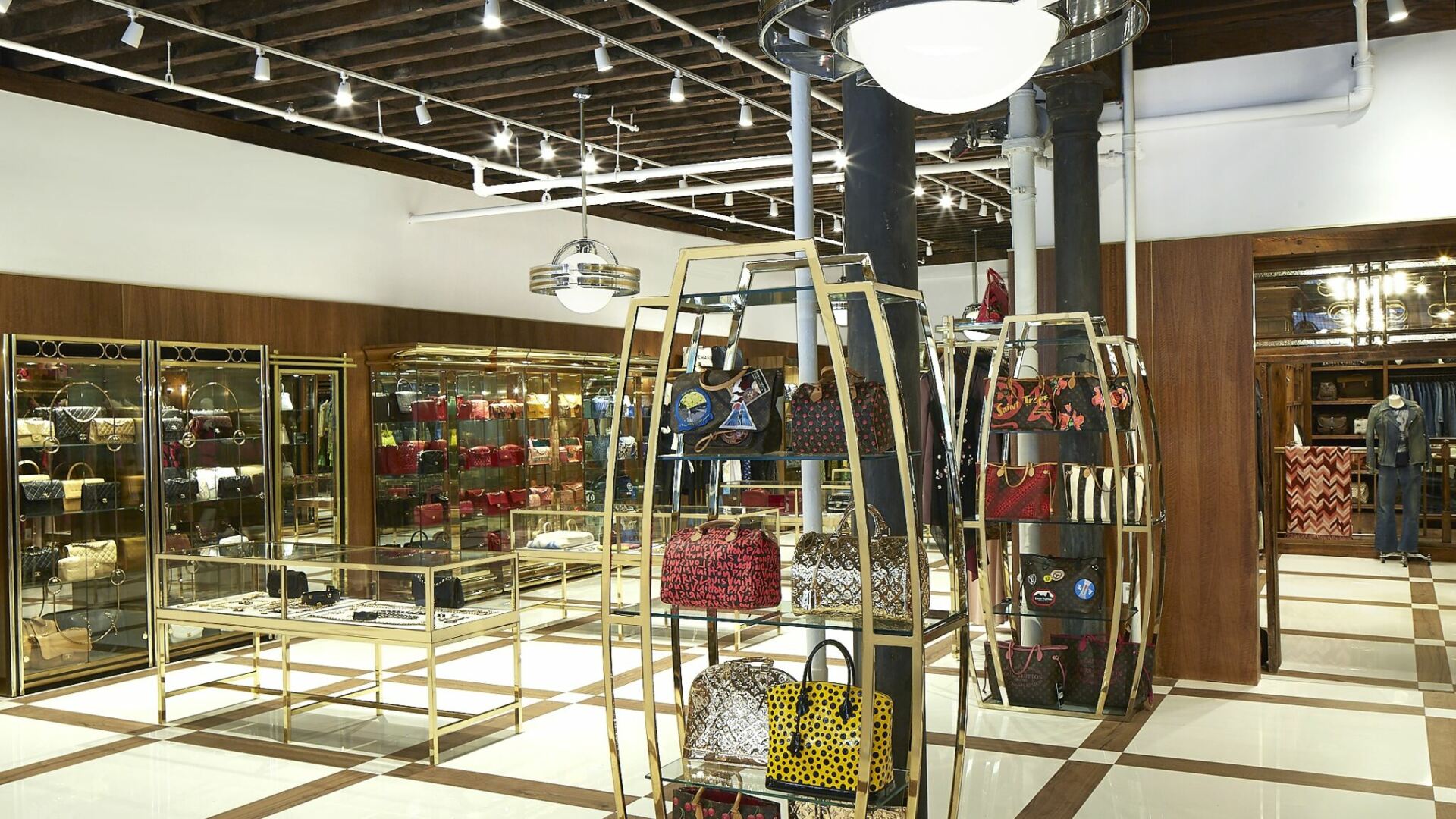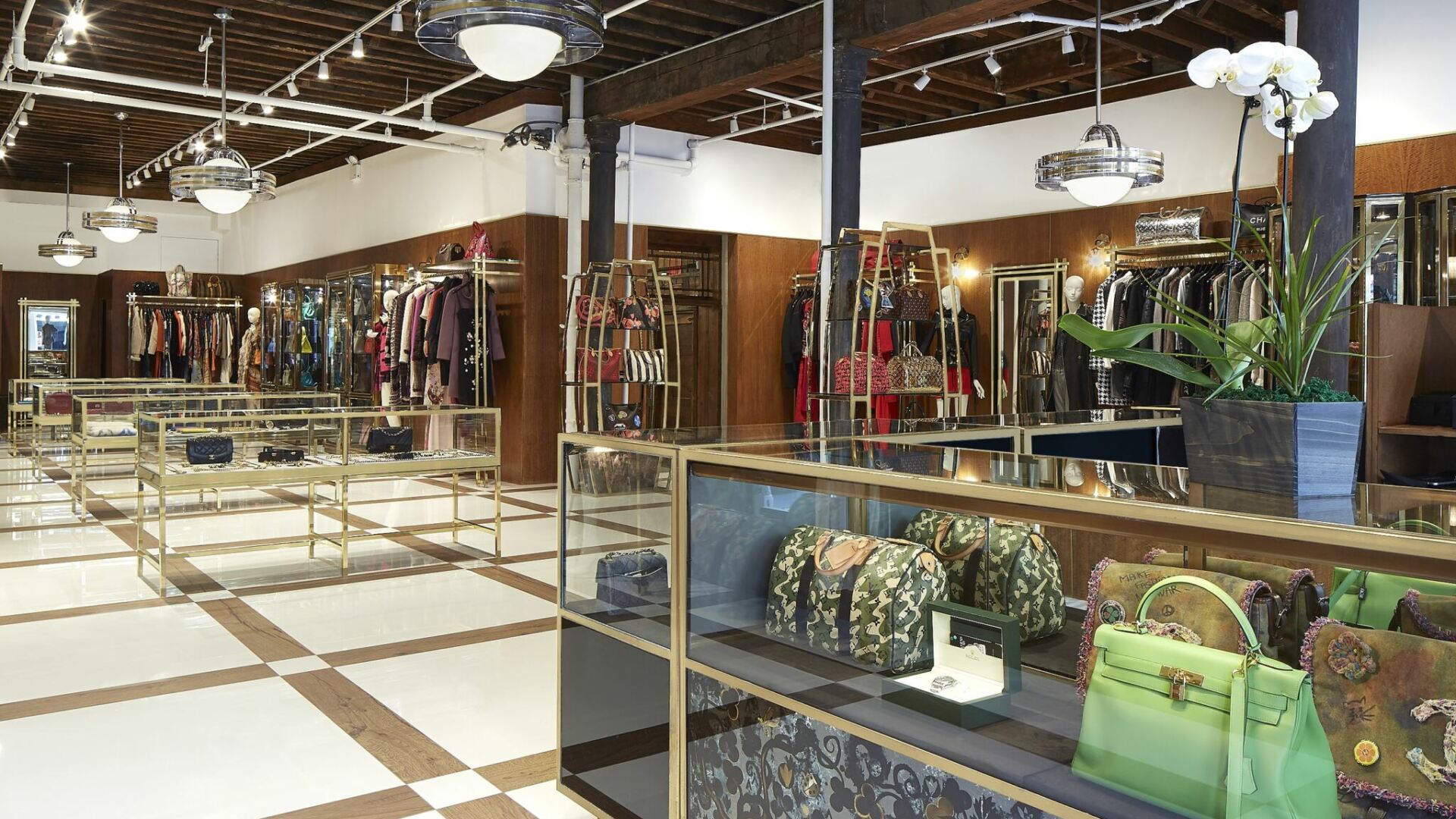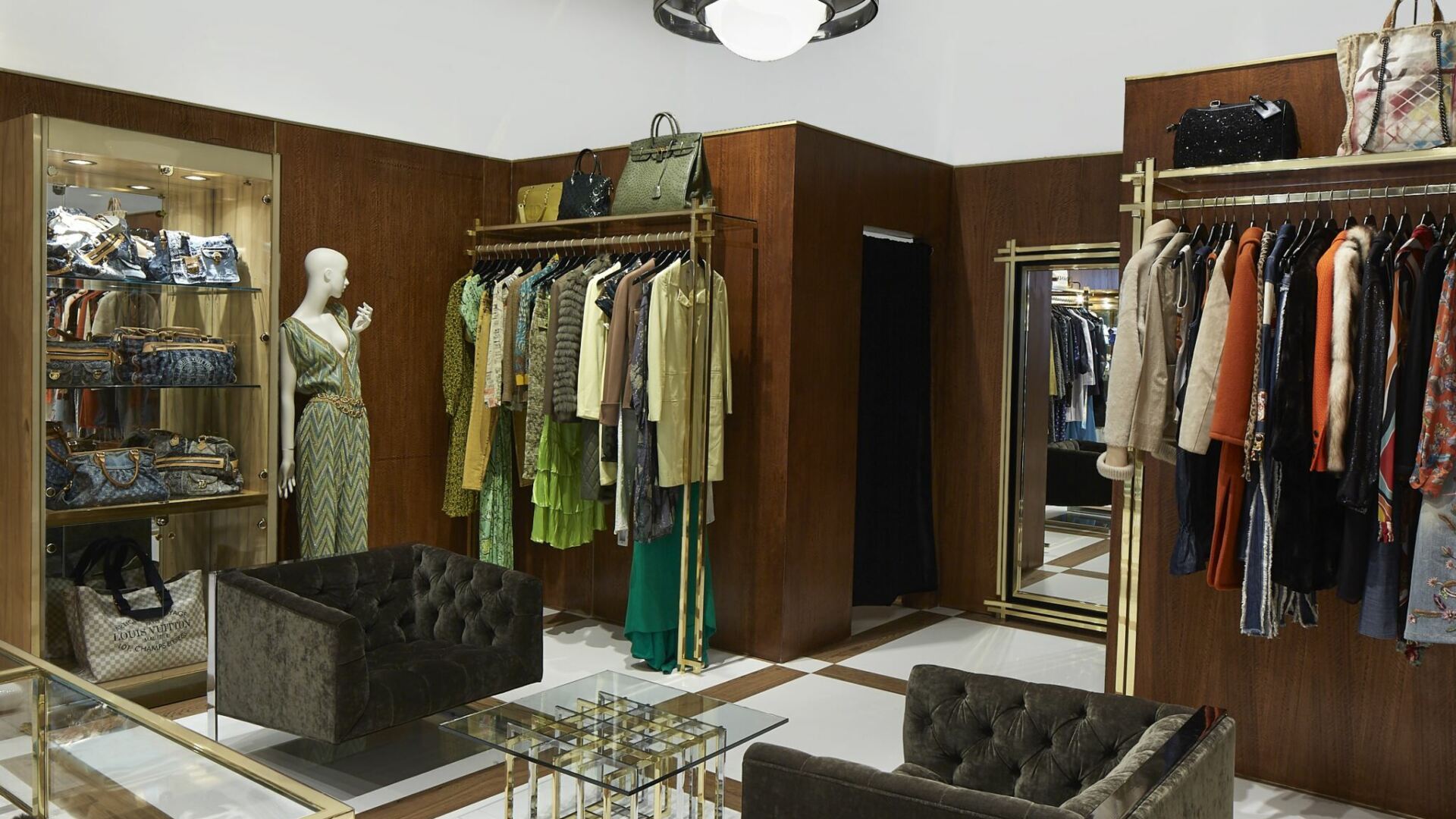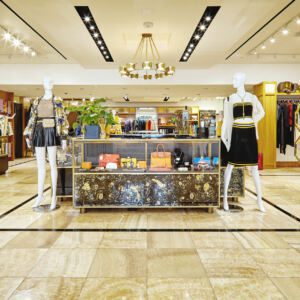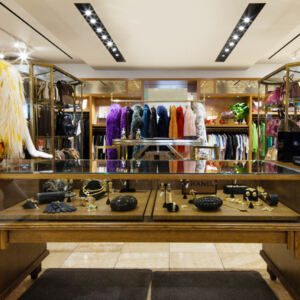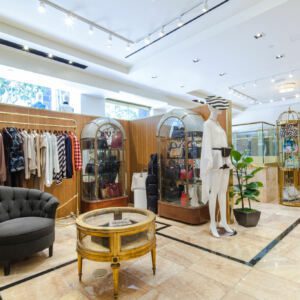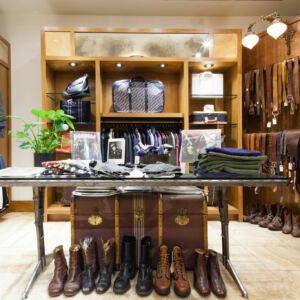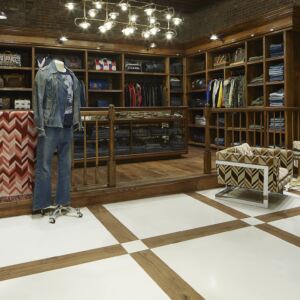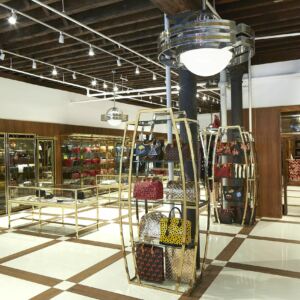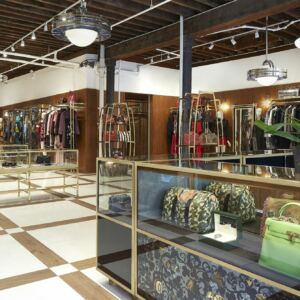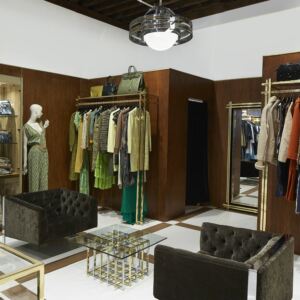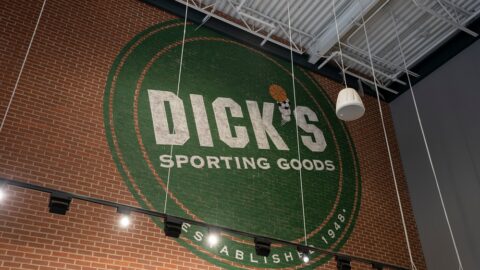It’s been 30 years since Seth Weisser and Gerard Maione opened their vintage boutique, What Goes Around Comes Around (WGACA) during the 1990s emergence of consumer appreciation for preloved garments. The business partners, who started as college friends, have weathered challenges including the rise of fast fashion, the advent of online consignment resale and major economic downturns, but now they’re enjoying the resurgence in love for preowned goods as the resale category grows.
Now the owners of three locations — two in Manhattan, including the original SoHo shop on West Broadway, and one in Beverly Hills, Calif. — Weisser and Maione have evolved with branding that is unique to WGACA, taking design notes from the most venerable names in luxury retail while remaining approachable. Within these spaces, clients feel as though they have entered a different era — the glamourous Bergdorf Goodman of 1950s New York or the indulgent 1930s of I. Magnin in Beverly Hills. Yet through expert merchandising and interior design, there is also a refreshed atmosphere rooted in the heritage of luxury retail.
“[Design] has to be inviting,” said Maione, Chief Creative Officer at WGACA in an interview with Retail TouchPoints. “It has to be representative of what you’re trying to embody with your brand. If we’re representing the highest form of preowned luxury, we are buying all over the world [so] we know what exists everywhere. We are trying to be the top and we want our space, our feeling and our shopping experience to be right in line with it. It should just flow.”
The store interiors complement the brilliance of the WGACA collection, and the retailer’s inventory of exquisite preowned goods and rare pieces serve as primary components of design and merchandising. Ironically, however, a cornerstone of the store design was to not resemble a vintage store.
“The idea was to make it more accessible and more shoppable versus the thrift reality in the ‘90s that was prevalent, and it was to edit as we always have,” said Weisser, CEO of WGACA in an interview with Retail TouchPoints. “We curated the best pieces, where it wasn’t about getting lucky but it was about finding the right piece for a collection and building up that way. It wasn’t crammed in like the typical shopping experience. It was merchandised more like a fashion boutique versus a vintage store.”
A Place Where Inventory Shines
While the three WGACA stores feature lust-worthy interiors, the true stars of the brand’s merchandising are its inventory. The West Broadway NYC location includes iconic ready-to-wear fashion from the late 1990s and early 2000s, in addition to menswear and designer collaborations with artists. At the Wooster Street location, the stars of the shop are high-end handbags and ready-to-wear in a brightly lit modern setting.
In Beverly Hills, located steps from the major Rodeo Drive fashion houses (sources of the vintage goods Weisser and Maione sell), the store’s inventory aligns with Broadway’s except with more Southern California elements, such as Chanel beach towels and a Louis Vuitton surfboard that hangs on a wall overlooking the space.
“The L.A. fashion customer now takes greater leaps and they’re a little bit more risqué and a little bit more sexy and provocative. I think New York has always been a bit more refined but for merchandising it’s not substantially different,” said Weisser. “Our top clients are tricoastal or wherever they are, and they’re always going between different markets. It’s become seasonless in an interesting way, because people will buy anything, at any time when they see it.”
In fact, Weisser and Maione will often swap out pieces from the New York stores with goods from Beverly Hills and vice versa when it’s time to refresh the stores’ inventory. Only a small portion of their inventory is featured online at whatgoesaroundnyc.com, which focuses on accessories such as handbags, scarves and jewelry.
Rather than consigning goods, WGACA buys all of its stock, illustrating the brand’s priority of investing in its inventory. It also relies on hangtags that feature QR codes, which yield product information including authentication that they are genuine articles examined by multiple experts at the company’s 34,000-square-foot New Jersey headquarters. The scarcity and investment potential of these rare vintage goods is an important component of the interior aesthetics of the store.
“Not all Chanel is created equal,” said Weisser. “We know what the best of the best is. These products are expensive and we want to respect the investment reality of the consumer spending thousands of dollars on a piece, and we want to direct that purchase. Five years from now or 10 years, if they retained this, they’re going to be thinking ‘Well, it was expensive but now it’s worth twice or 4X or 5X as much’ for some items depending how long you hold it.”
Growing a Footprint for Housing the Finer Things
Relying on the founders’ love of telling fashion’s stories through vintage items, the WGACA spaces on each coast provide personalized, specialized experiences, staffed by experts in the heritage of luxury who share their enthusiasm for quality craftwork of preowned goods.
The flagship 2,500-square-foot New York location at 351 West Broadway, where WGACA was founded, is housed within a building that dates back to 1889. A private 1,000-squre-foot archival area named “The Vault” is housed in the basement. During a recent renovation, Weisser and Maione decided to allow the space’s more than 130-year-old design features, such as supportive ceiling beams, to shine through.
“We wanted to make sure to keep a dynamic of SoHo loft history with this modern take,” Maione said. “The ceiling hadn’t been revealed in 80 years. The boards were still in nice condition. They had been covered by a drop ceiling.”
Formerly an associate at the 72nd Street Ralph Lauren mansion location that caters to the affluent consumer, Maione developed a taste there for thoughtful, luxurious retail design elements. For example, when the opportunity arose to source oak that Maione believes to be approximately 200 years old from the Monroe, N.Y. antique wood supplier to Ralph Lauren, the WGACA owners decided to build their denim bar during the early years of the business. It has since become a destination for denimheads, and the partners maintained this feature during the renovation.
The remainder of the store features Art Deco elements and vintage retail display cases containing 1990s Chanel, Hermès and Louis Vuitton items. The flooring features a large grid of porcelain tile in white and wood hues, while the walls are covered in a eucalyptus wood.
During the renovation of its West Broadway location, WGACA opened a 5,000-square-foot space at 105 Wooster Street, also in SoHo, which “ended up being extremely and interestingly different than our business and traffic on West Broadway,” said Weisser.
Expanding Into the L.A. Market
In 2011, WGACA moved westward, settling on Los Angeles’ La Brea Avenue, where shoppers can find an array of styles, from vintage to streetwear. WGACA’s inventory in this store consisted primarily of vintage items from the 1930s, ‘50s and ‘70s.
As the brand evolved into a more luxurious source for high-end fashion, however, it required a space that spoke to that consumer. Weisser and Maione headed to Rodeo Drive where Jay Luchs, Vice Chairman at Newmark, recommended a 4,000-square-foot space formerly occupied by the Art of Shaving at the intersection of Brighton Way. The renovation was a large task in this space, which has an entrance featuring a few steps down into the shop, but Maione’s interior design sensibilities kicked in to create an experience that was rich enough for Rodeo yet retained the WGACA branding.
“There are cases from the 1930s I. Magnin Beverly Hills location,” said Maione. “I found two of them in an antique store and the associate said, ‘I have more.’ It ended up comprising the whole cash wrap. The floor tiles are honey onyx. I had to go around inspecting them because honey onyx can vary and not have nice character. This whole set was just gorgeous and I needed 3,300 square feet of it. We designed the floor with this whole pattern of granite and brass inlay throughout.”
Walls in the Beverly Hills store include a eucalyptus veneer similar to the West Broadway location. Display cases from the turn of the 20th century house the shop’s precious accessories, such as Louis Vuitton and Chanel handbags, and 90-year-old clothing racks securely display garments from Tom Ford, Versace, Prada, Azzedine Alaïa and Roberto Cavalli.
While the space has a cohesive look, Maione noted that sourcing antique furniture, fixtures and design elements takes patience — and entails a bit of risk — due to the scarcity that forces him to buy items when he sees them. It’s the same type of risk WGACA runs in sourcing its inventory: “They’re not always there when you want them,” said Maione. “It’s what’s out there.”
In true Hollywood style, a VIP room in the back welcomes celebrities, stylists and influencers who wish to explore the most exclusive pieces including glamourous red-carpet gowns. An enormous bar sourced from a jewelry store’s demolition site in Great Neck, N.Y. sits next to a Pierre Cardin table where guests may sip coffee or libations, within a room that follows a design scheme aligned with the main sales floor but in an intimate setting.
‘What Goes Around’ Applies to Events as Well
Next on the list for WGACA is hosting events, another nod to its roots as a meeting spot for the New York after-dinner crowd who would pass by the West Broadway shop. In the 1990s, even after closing time, once passersby saw Weisser, Maione and a few visitors having fun well into the night, the shop became a local hangout.
“People were coming in at 6 p.m. with beers — we were young; it was like our home,” said Maione. “We would then go through the evening, closing at 8 p.m. but just chill there. People would be going to dinner in SoHo and at 9:30 or 10:30 p.m. people were coming through asking ‘What’s going on here?’ Next thing you know they are in a dressing room trying on and transacting at 10:30 p.m., 11 p.m. and midnight. I still have very vivid memories of women trying on Gucci dresses at midnight. We started staying open [during the week] until midnight and Saturday until 2 a.m. A New York Times article ran and was titled FORAGING; Late Night to Rival Letterman. It was our first big hit editorially. At that time, you had Bill Cunningham running around — or biking around.”
Maione hopes to begin hosting in-store events again among beautifully crafted vintage fashion within these well-designed, inviting spaces that blur the line between retail store and artistic exhibition space.




